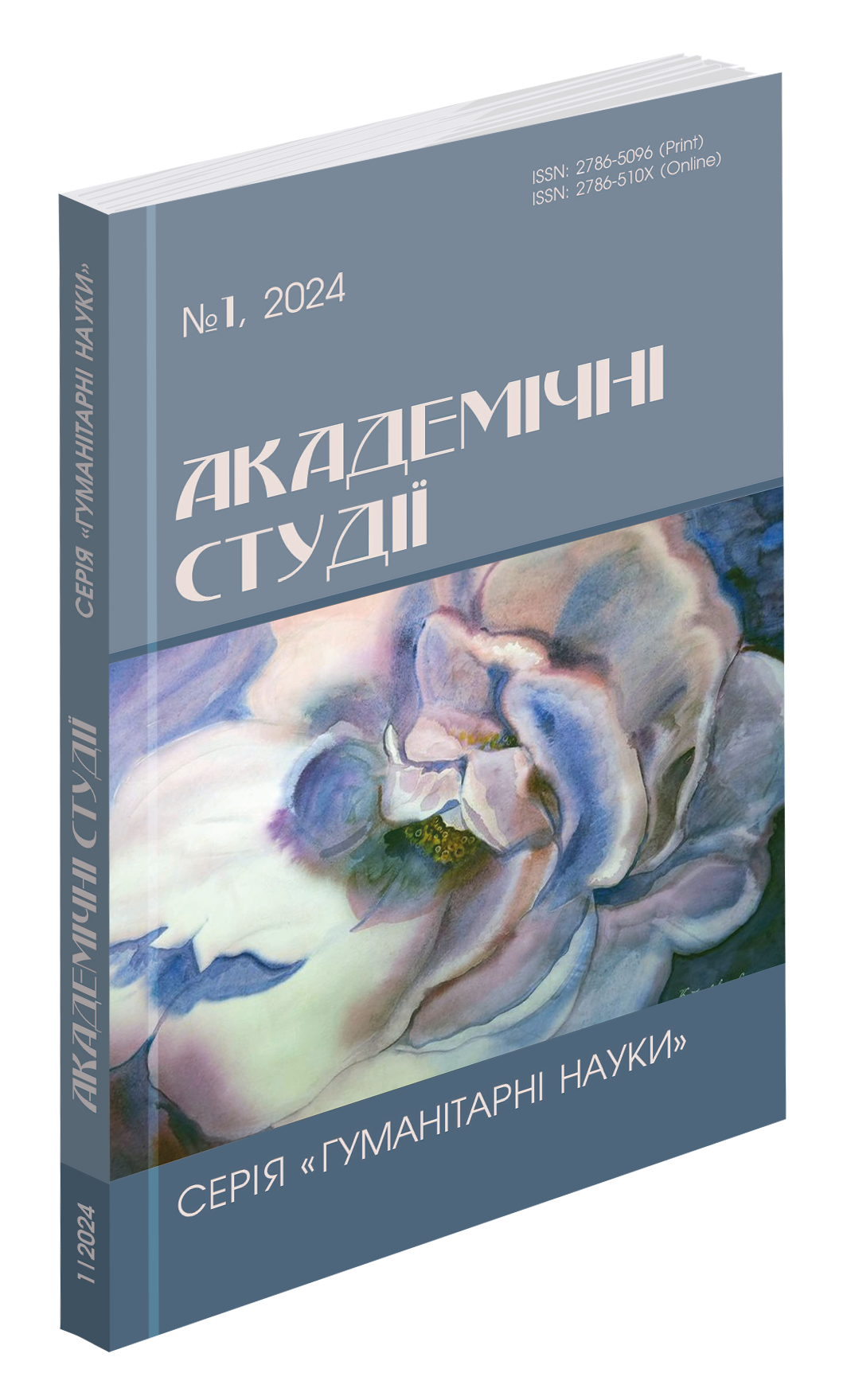Abstract
The article reveals one of the semantic aspects of the sketch story by Olena Zvychayna “Myrhorod Fair”, in particular, the symbolic meaning of the hundred-year-old plachta as a cultural and spiritual heritage of the Ukrainian people. It is noted that the story was written by an emigrant writer before the 20th anniversary of the Holodomor, which the writer herself witnessed. Emphasis is placed on the documentary reliability and autobiographical nature of the events described in the sketch story. The author’s creative resonance with Mykola Gogol was studied, in particular the use of parallelism, antithesis, rhetorical appeals, and landscape sketches. The techniques of psychological writing and the elements of realism in the story, with the help of which the tragedy of the Ukrainian peasantry, that suffered from the famine artificially created by the Soviet authorities, was artistically reproduced are analyzed. The satirical and revealing tendency of the “Myrhorod Fair” sketch story in which Olena Zvychayna convincingly demonstrates the anti-human nature of the totalitarian state machine, which mercilessly eradicated Ukrainian culture, thereby destroying Ukrainians as a nation is proven. Special attention is paid to the artistic image of the plachta, its meaning is analyzed not only as a material thing, but as a family heirloom. It was demonstrated how the Soviet nomenclature turned unique artifacts of Ukrainian folk creativity into “Moscow trends”, while mercilessly destroying Ukrainians themselves. A comparative analysis of the Olena Zvychayna sketch story and M. Gogol’s “Sorochyn Fair” is carried out. As a result of the research, it is proved that a detailed study of the “Myrhorod Fair” sketch story makes it possible to reveal the scale of the crime of the Soviet-Bolshevik authorities against the Ukrainian peasantry; expose the lawlessness of the then government, which planned to eradicate the genetic code of the Ukrainian nation; to show the despotism of the inhumane Stalinist totalitarian regime, which used food as a weapon to destroy the cultural heritage of the Ukrainian people.
References
Бабич Г. Літературна Миргородщина. Сторінки історії Миргородщини. Полтава, 2001. С. 15–16.
Григоріїв Ю. Повість про дівочу долю в країні, де не шануються людські права. Звичайна О. Ти: Повість із життя українців у золотоверхому Києві в 1927–29 рр. Мюнхен, 1982. С. 7–13.
Звичайна О. Миргородський ярмарок. Мюнхен : Накладом Ліги Українських Політичних В’язнів, 1953. 46 с.
Ленська С. В. Рецепція гоголівських мотивів у «Миргородському ярмарку» Олени Звичайної. Філологічні науки. 2019. Вип. 30. С. 20–25.
Маринич Р. В Острозькій академії презентували книгу про Голодомор 1932-1933 рр. 2015. URL: https://www.oa.edu.ua/ua/info/news/2015/26-11-01 (дата звернення: 20.01.2024).
Пасічник І., Кралюк П. (Не)звичайний «Миргородський ярмарок». Олена Звичайна. Миргородський ярмарок. Острог : Видавництво Національного університету «Острозька академія», 2015. С. 5–7.

